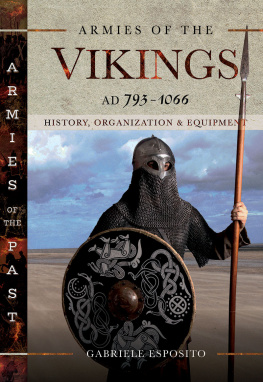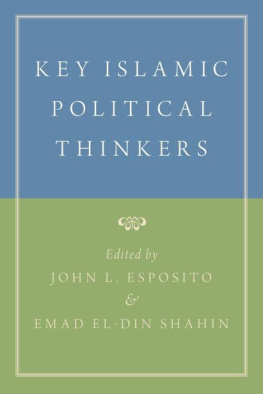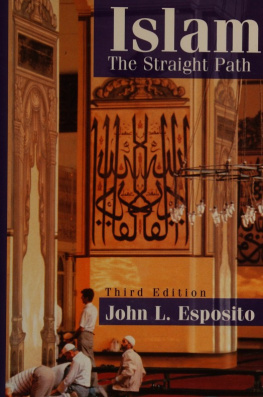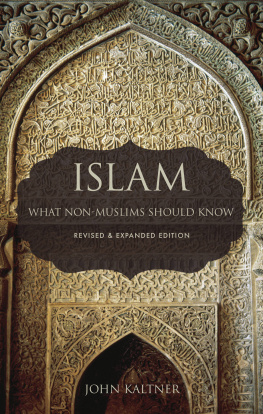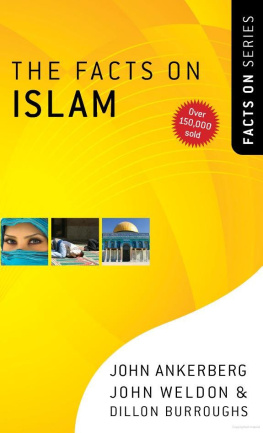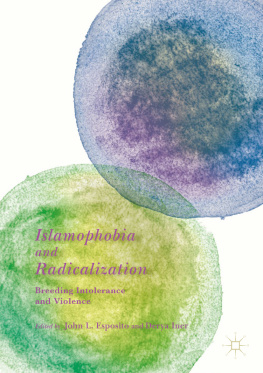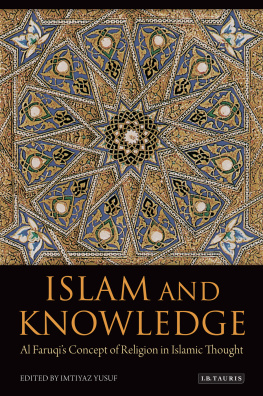Esposito John L. - The Oxford History of Islam
Here you can read online Esposito John L. - The Oxford History of Islam full text of the book (entire story) in english for free. Download pdf and epub, get meaning, cover and reviews about this ebook. year: 1999, publisher: Oxford University Press, Incorporated, genre: Politics. Description of the work, (preface) as well as reviews are available. Best literature library LitArk.com created for fans of good reading and offers a wide selection of genres:
Romance novel
Science fiction
Adventure
Detective
Science
History
Home and family
Prose
Art
Politics
Computer
Non-fiction
Religion
Business
Children
Humor
Choose a favorite category and find really read worthwhile books. Enjoy immersion in the world of imagination, feel the emotions of the characters or learn something new for yourself, make an fascinating discovery.

- Book:The Oxford History of Islam
- Author:
- Publisher:Oxford University Press, Incorporated
- Genre:
- Year:1999
- Rating:4 / 5
- Favourites:Add to favourites
- Your mark:
- 80
- 1
- 2
- 3
- 4
- 5
The Oxford History of Islam: summary, description and annotation
We offer to read an annotation, description, summary or preface (depends on what the author of the book "The Oxford History of Islam" wrote himself). If you haven't found the necessary information about the book — write in the comments, we will try to find it.
The Oxford History of Islam — read online for free the complete book (whole text) full work
Below is the text of the book, divided by pages. System saving the place of the last page read, allows you to conveniently read the book "The Oxford History of Islam" online for free, without having to search again every time where you left off. Put a bookmark, and you can go to the page where you finished reading at any time.
Font size:
Interval:
Bookmark:
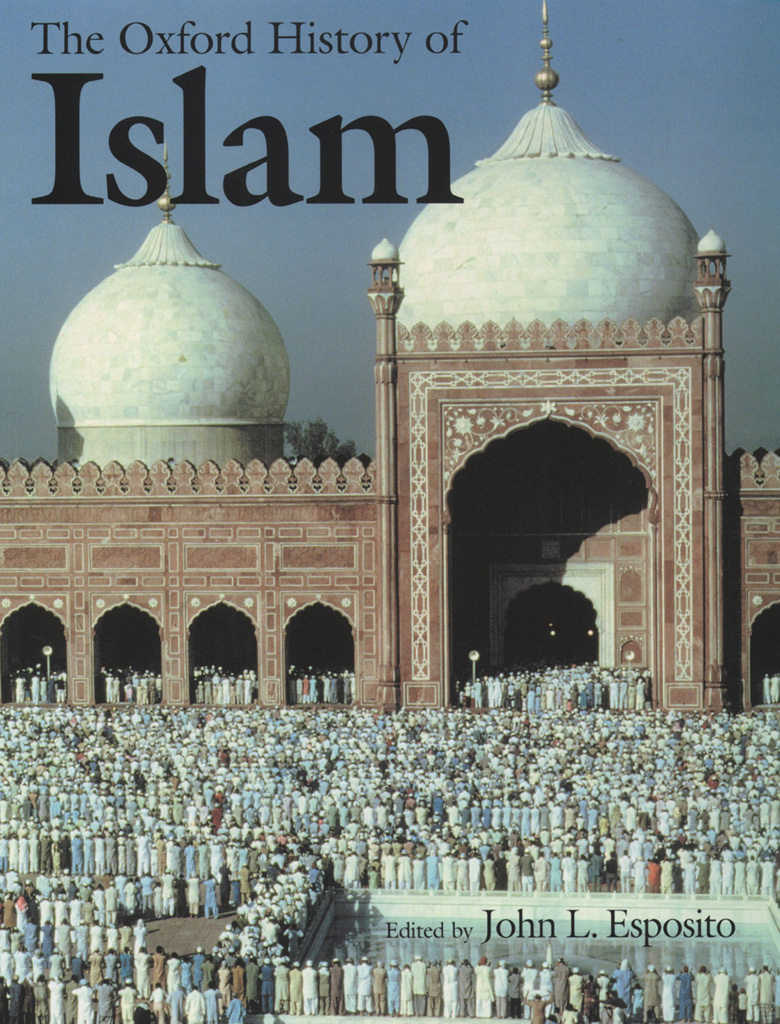
For a deft survey of the Near Eastern background against which Islam emerged, consult Peter Browns The World of Late Antiquity (London: Harcourt, Brace, Jovanovich, 1971). A sensible treatment of the life of the Prophet Muhammad, which manages to avoid the extremes of either undue skepticism or credulous apologetic that mar many works, is F. E. Peters Muhammad and the Origins of Islam (Albany, N.Y.: SUNY Press, 1994). The best recent survey of early Islamic history in the mashriq is found in Hugh Kennedys The Prophet and the Age of the Caliphates: The Islamic Near East from the Sixth to the Eleventh Centuries (London: Routledge, 1986). For the Islamic West, see Jamil M. Abun-Nasrs A History of the Maghrib in the Islamic Period (Cambridge: Cambridge University Press, 1987) on North Africa. On Spain, see tzhe many valuable essays in Salma Khadra Jayyusi, ed., The Legacy of Muslim Spain (Leiden, Netherlands: E. J. Brill, 1992). A concise review of developments in Iran from the eleventh to the thirteenth centuries is found in the relevant chapters of David Morgans Medieval Persia, 10401797 (London: Routledge, 1988); a much fuller treatment is provided by two rich volumes of the Cambridge History of Iran: volume 4, From the Arab Invasion to the Saljuqs, and volume 5, The Saljuq and Mongol Periods (Cambridge: Cambridge University Press, 1975 and 1968, respectively).
A readable overview of the early spread of Islam in Anatolia, associated with the arrival of the Turks, is Claude Cahens Pre-Ottoman Turkey (New York: Taplinger, 1968). The more ambitious reader may look to Marshall G. S. Hodgsons magisterial The Venture of Islam, 3 vols. (Chicago: University of Chicago Press, 1973); although it is not always easy to read, this work remains the most intellectually stimulating synthesis of the entirety of Muslim history and civilization, and it is especially strong on the periods covered in this chapter. An interesting recent interpretation of the development of Islamic culture is found in Richard Bulliets Islam: The View from the Edge (New York: Columbia University Press, 1994). For readers who have difficulty grasping the realities of remote periods of history, because they have little sense of what life in premodern times was actually like, Patricia Crones Pre-Industrial Societies (Oxford: Basil Blackwell, 1989) is highly recommended.
Books have a habit of going out of print with alarming frequency in the field of Islamic studies. What follows is a short list of works that might help the reader who is interested in the issue of Islamic faith and practice and its relevance to the fields of law and ethics. Works quoted in this chapter are also listed below.
Muhammad Abul Quasems The Ethics of al-Ghazali: A Composite Ethics in Islam (Delmar, New York: Caravan Books, 1978) is the best source of information on al-Ghazalis ethical theories. Although this book is out of print, it can be found in major university and public libraries. Chapter three of Vincent J. Cornells Realm of the Saint: Power and Authority in Moroccan Sufism (Austin, Texas: University of Texas Press, 1998) is the sole source of information on Abul-Abbas al-Sabti and his teachings in the English language. Charles Le Gai Eatons Islam and the Destiny of Man (Cambridge: Islamic Texts Society, 1994) is one of the best introductions to Islam for the general reader, especially with regard to the relationship between faith and practice. Although Majid Fakhrys Ethical Theories in Islam (Leiden and New York: E. J. Brill, 1991) focuses mostly on philosophical ethics, its chapter on scriptural morality contains useful information on ethical principles in the Quran and the hadith. Richard M. Franks Knowledge and Taqlid: The Foundations of Religious Belief in Classical Asharism, Journal of the American Oriental Society 109:1 (JanuaryMarch 1989), 3762, provides the classical Islamic justification for many of the theological assertions mentioned above. Although Toshihiko Izutsus Ethico-Religious Concepts in the Quran (Montreal: McGill University Press, 1966) is now out of print, it should be sought in major university and public libraries as the best source of information on Quranic ethics. God and Man in the Koran: Semantics of the Koranic Weltanschauung (New York: Arno Press, 1980) is another classic work by Izutsu. It is especially valuable for its chapter on the ethical relationship between God and man in Islam and its discussion of the term islam and the concept of religion. Sayyid Qutbs In the Shade of the Quran, trans. M. Adil Salahi and Ashur A. Shamis (London: MWH Publishers, 1979), is the English translation of the thirtieth part of Qutbs Fi Zilal al-Quran, which was published after the authors death in 1966. Abu Bakr Siraj ad-Dins Book of Certainty (Cambridge: Islamic Texts Society, 1992) is one of the best discussions in any language of the Quranic concepts of the knowledge of certainty, the eye of certainty, and the truth of certainty. Finally, Frithj of Schuons Understanding Islam (Bloomington, Indiana: World Wisdom Books, 1994), the English translation of Comprendre LIslam (Paris, 1976), provides one of the best overall comparisons of the Quranic worldview with that of Catholic Christianity. This highly intellectual introduction to Islam is not suitable for every reader, however.
Copyrights in Arabic publishing are often loosely enforced. In addition, classic works of Islamic scholarship may be reprinted (often from the same original) in more than one country as a service to the Muslim community. For reasons such as these, editions of the Quran and prophetic hadith are usually cited generically in bibliographies, leaving out the mention of publisher and date. For example, the version of Muslim ibn al-Hajjaj al-Nisaburis Sahih Muslim used for this chapter (the source of the Hadith of Gabriel discussed in this chapter) was copied from an unspecified original and published at an unspecified date in Beirut by Dar al-Kutub al-Arabiyya. Appended to the text is a commentary on Sahih Muslim by the famous Shafiite jurist Abu Zakariya al-Nawawi (123377). Such commentaries are often useful for determining the majority interpretation of a normative text. The other Arabic works cited in this chapter were published with full attention to copyright regulations. Abu Muhammad ibn Abi Zayd al-Qayrawanis Matn al-Risalah [text of the treatise] (Rabat, Morocco: Ministry of Endowed Properties and Islamic Affairs, 1984) was written by al-Qayrawani when he was only seventeen years old. Composed as a response to an earlier Shiite creed, it is the mostly widely known Sunni creed in North and West Africa. Quotations from Abul-Abbas al-Sabti came from Yusuf ibn al-Zayyat al-Tadilis al-Tashawwuf ila rijal al-tasawwuf wa akhbar Abi-l-Abbas al-Sabti [Insight into the men of Sufism and information on Abul-Abbas al-Sabti], ed. Ahmed Toufiq (Rabat, Morocco: College of Letters, Mohammed V University, 1984). This work, first published in the early thirteenth century, is one of the oldest sources on the founders of the Moroccan Sufi tradition.
A useful bibliography of English and Arabic works on Islamic law can be found in Mohammad Hashim Kamalis Principles of Islamic Jurisprudence, 2nd ed. (Cambridge: Islamic Texts Society, 1991). This book also provides an extensive treatment of the sources of Islamic law and legal theory. The third revised and enhanced edition of this work is forthcoming from the Islamic Texts Society. Subhi Mahmassanis
Font size:
Interval:
Bookmark:
Similar books «The Oxford History of Islam»
Look at similar books to The Oxford History of Islam. We have selected literature similar in name and meaning in the hope of providing readers with more options to find new, interesting, not yet read works.
Discussion, reviews of the book The Oxford History of Islam and just readers' own opinions. Leave your comments, write what you think about the work, its meaning or the main characters. Specify what exactly you liked and what you didn't like, and why you think so.


